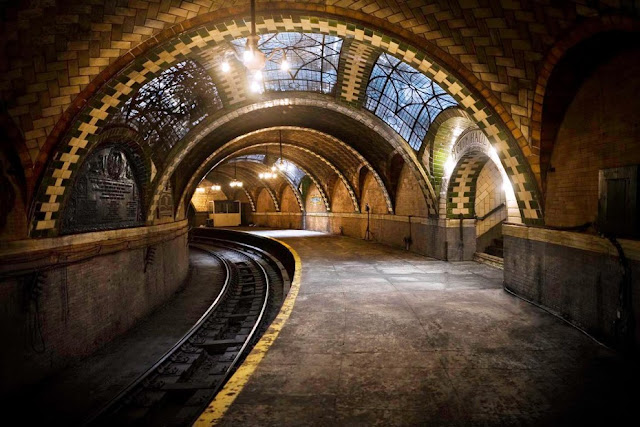by: MessyNessy
As far back as 1867, the streets of New York were always bustling with crowds of people. An ambitious engineer and businessman by the name of Alfred Ely Beach had a better idea. He wanted to transport the masses by subway. The radical idea was laughed at and initially Beach could only get a permit to build an underground mail tube.
But he took what he could get and simply built the tube large enough to hold his subway cars. And so, New York City’s first subway was born in the form of a pneumatic tube, a giant rotary blower that pushed a single car down the track.
It took only 58 days to complete a single 95 meter tunnel that ran under Broadway from Warren Street to Murray Street, for which Beach put up $350,000 of his own money. During its first two weeks of operation, the Beach Pneumatic Transit sold over 11,000 rides and over 400,000 total rides at 25 cents a fare.
Riders entered the station oddly enough at Devlin’s Clothing Store, a well-known shop at 260 Broadway on the southwest corner of Warren Street. Once inside the station, the Victorian subway riders would find themselves in an ornate “waiting room”, adorned with frescoes, armchairs and statues.
There was even a gold fish pond and a grand piano playing to entertain nervous commuters awaiting their first ride on a strange new form of transport. The cars, also outfitted with plush seating and Victorian luxuries, could hold 22 people.
 |
| This illustration of Alfred Ely Beach’s pneumatic train car, as it originally appeared in an 1870 issue of Scientific American. |
But the whole project was more of a demonstration, running only a single car on its its one-block-long track to a dead-end at its terminus. When the car reached the end, the blower system was then reversed, pulling the car back by suction. Much like a funfair attraction, passengers would simply ride out and back, to see what the proposed subway might be like. It was planned to run about 8km in total, to Central Park, if it was ever completed.
Beach was delayed in getting permission to expand it and by the time he finally gained permission in 1873, the stock market had crashed and public and financial support was gone. The subway was shut down within the year. He tried leasing the tunnel out for wine storage and even a shooting gallery but still could not make ends meet. The failed subway was finally boarded up and with Beach’s death a few later, its existence was totally forgotten.
That is until 1912 when the current subway was being built. Surprised workers discovered the old tunnel, where they found the remains of the car, the tunnelling shield and even the piano in the subway’s waiting room.
They decided to incorporated the discovery into the City Hall station (now itself a disused ghost station), where a simple plaque on the wall commemorates the first American subway.













